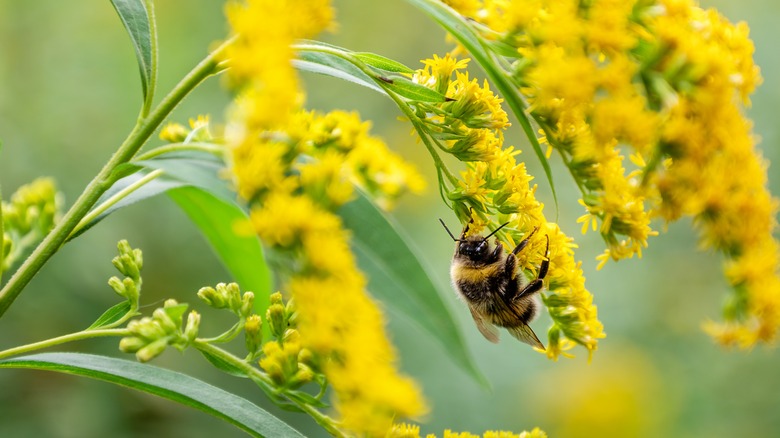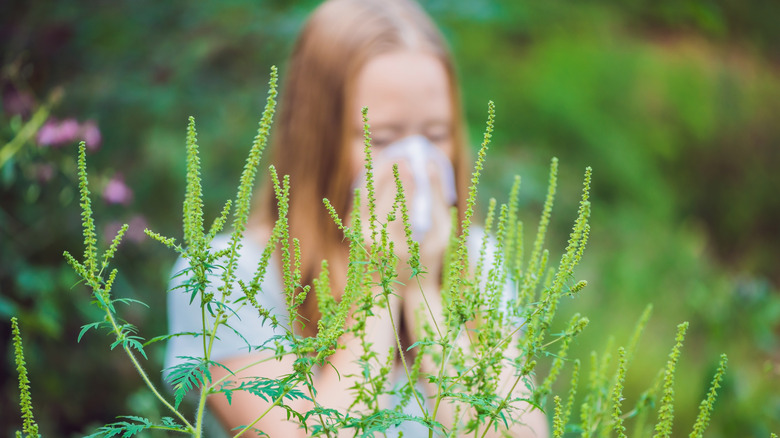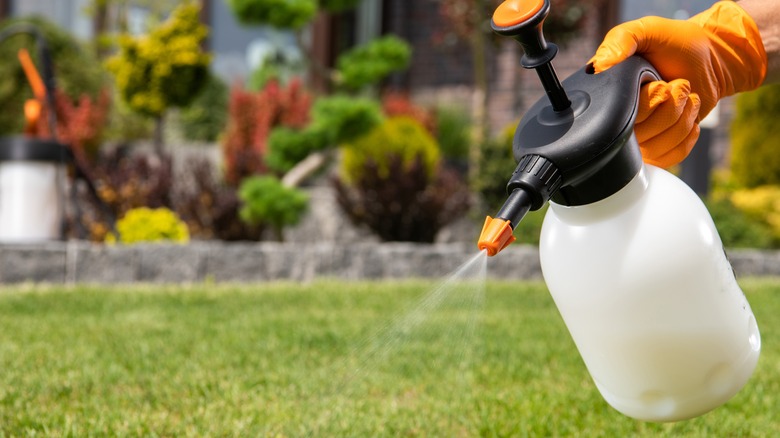The Fast-Spreading Goldenrod Look-Alike You Don't Want To Find In Your Lawn
Goldenrod (Solidago spp.), a gorgeous North American native, has long been unfairly blamed for allergies and hay fever due to its similarity to another, far more allergenic native plant. Not only does goldenrod not cause hay fever, but it also provides a valuable food source for bees, butterflies, and birds, and is even great for adding to floral arrangements. Its sneeze-inducing look-alike ragweed (Ambrosia spp.), on the other hand, is considered a noxious weed in some states and should be removed immediately.
The confusion between ragweed and goldenrod is understandable, especially when the plants are blooming. Both flower in late summer and early fall, so it's no surprise that goldenrod gets the blame for allergies. Goldenrod has an alibi: It can't be the cause of your hay fever because its large pollen grains can't be carried by wind. Instead, it is pollinated by the bees and other insects that visit it. Ragweed, on the other hand, relies on wind pollination, sending out billions of tiny pollen grains that can ruin the day of allergy sufferers miles away.
Telling the difference between ragweed and goldenrod
While both ragweed and goldenrod are members of the Asteraceae family, you can easily tell them apart if you know what to look for. Goldenrod leaves are long and thin, with a lance-like shape. In contrast, ragweed has lobed leaves that are more reminiscent of the plant artemisia, or even the leaves of tomatoes.
Both ragweed and goldenrod can get impressively tall, with goldenrod growing to between 2 and 6 feet depending on the species, while common ragweed often reaches 6 feet — and giant ragweed can grow to 20 feet. While you can't use the plants' heights to distinguish them, you should be able to tell the difference between ragweed and goldenrod based on flowers. Goldenrod, as its name suggests, has a panicle of bright yellow flowers that form at the top of the plant. Ragweed's flower spikes, on the other hand, are usually green and far less impressive looking. If you're still struggling to tell if the plant in your yard is ragweed or goldenrod, consider using Google to identify the plant.
Eradicating ragweed
If it turns out that the plant growing in your yard is not goldenrod as you'd hoped but ragweed, then the best thing to do is remove it immediately. Not only can it cause serious health problems for people with allergies, asthma, and other conditions, but in certain states, you are legally required to remove it due to its noxious status. Just be sure to wear gloves when removing ragweed, as it often causes contact dermatitis. If you are only dealing with one or two plants, the best option may be to simply pull them out by hand before they have the chance to flower, but for larger patches, that likely isn't an option.
Mowing ragweed can keep it from flowering and setting seed, and as common ragweed (Ambrosia artemisiifolia) is an annual, that should hopefully lead to significantly less ragweed in future years. Western ragweed (Ambrosia psilostachya), on the other hand, is a perennial, so it could take years of mowing before it is eradicated. Because of this, herbicides are often a necessary evil when it comes to keeping ragweed out of your lawn. Unfortunately, ragweed has quickly developed resistance to many common herbicides, so repeated treatments and the use of both pre and post-emergent herbicides may be necessary. Just be sure to use protective gear when working with herbicides and follow the instructions carefully.


